Flight log
Flight 53: Basic instrument flying training at Cessnock in a Cessna 150
In this session, I practiced flying the aircraft using only the instruments on the dashboard rather than looking outside. I flew VH-SLL, a Cessna 150.

Full-length video for Flight 53.
A few months ago, I practiced basic instruments flying (BIF) on a flight simulator. Today, I would practice BIF in the air using a Cessna 150.
Learning basic instrument flying skills benefits recreational pilots for several important reasons.
First and foremost, there's the issue of safety. Weather can be unpredictable, and having the ability to fly by instruments means you're better prepared for sudden changes in visibility. Imagine you're on a perfect sunny flight, and then you hit an unexpected cloud bank or fog. If you know how to use your instruments, you can navigate through those tricky situations safely.
It also makes you a more confident pilot. Knowing that you can rely on your instruments gives you peace of mind. You won't be as anxious about the "what if" scenarios because you'll have the skills to handle them. This confidence translates into better decision-making too. You'll be more equipped to assess whether it's safe to continue a flight or if you need to make adjustments, like diverting to another airport.
There are practical benefits as well. For one, you can fly more often. Basic instrument skills allow you to handle less-than-ideal weather conditions, so you won't be grounded as much. Plus, you'll be better prepared for emergencies. If you ever find yourself in a situation where visibility drops unexpectedly, you'll know how to rely on your instruments to navigate and stay safe.
From a training perspective, having basic instrument skills sets a solid foundation for future advancements. If you ever decide to go for an Instrument Rating (IR), you'll already be ahead of the game. And in some places, there are regulations that require a minimum level of instrument proficiency for all pilots. So, you'll be meeting those standards and expanding your flying capabilities.
On a more personal note, learning to fly by instruments is a rewarding challenge. It enhances your skills and makes flying even more enjoyable. You'll gain respect from fellow pilots, showing your dedication to safety and excellence in aviation.
What is Basic Instrument Flying?
Instrument flying is all about flying the aircraft using only the instruments on your dashboard, rather than looking outside. This is crucial when flying in conditions where you can't see the horizon, like in clouds, fog, or at night.
When learning basic instrument flying, student pilots use a special training device called a "hood" or "view-limiting device." This device is essentially a visor that obstructs their view outside the cockpit, forcing them to rely solely on the aircraft's instruments. The hood I used is more like an oversized visor. Once I positioned it, I couldn't see anything outside of the plane, either through the windshield or the left and right windows.
Why is it important?
Imagine you're flying on a beautiful sunny day and suddenly entering a thick cloud. Without the ability to see the horizon, it can be disorienting. Instrument flying skills help you keep control of the aircraft in such situations, ensuring you stay safe and on course.
The key instruments
Let's get familiar with the key instruments you'll be using:
- Attitude Indicator: This shows the aircraft's position relative to the horizon. It helps you maintain level flight or the correct angle for climbs and descents.
- Heading Indicator: This shows the direction the aircraft is heading. It's like a compass but more stable and accurate when making turns.
- Altimeter: This tells you your altitude above sea level. Crucial for maintaining the correct altitude.
- Airspeed Indicator: Shows how fast you're flying relative to the air around you. It's important for ensuring you're flying at safe speeds.
- Vertical Speed Indicator (VSI): Shows your rate of climb or descent. Helps in making smooth altitude changes.
- Turn Coordinator: Helps you make coordinated turns, showing the rate of turn and whether you're slipping or skidding.
Basic Maneuvers
- Straight and Level Flight:
- Keep the wings level using the attitude indicator.
- Maintain a constant heading with the heading indicator.
- Ensure a stable altitude with the altimeter.
- Adjust the throttle to maintain a constant airspeed.
- Turns:
- Use the turn coordinator to make smooth, coordinated turns.
- Watch the attitude indicator to keep the correct bank angle.
- Monitor the heading indicator to roll out on the desired heading.
- Climbs and Descents:
- Set the desired pitch angle using the attitude indicator.
- Adjust power: more for climbs, less for descents.
- Keep an eye on the altimeter to reach and maintain the desired altitude.
- Use the airspeed indicator to manage your climb or descent rate.
Tips for Success
- Scan Pattern:
- Develop a good scan pattern. Continuously move your eyes between instruments in a systematic way to keep track of all the key parameters.
- Small Corrections:
- Make small, smooth corrections. Over-correcting can lead to more problems.
- Trust Your Instruments:
- Trust what the instruments are telling you, even if it feels counterintuitive. In disorienting conditions, your body can give you false sensations.
- Practice:
- The more you practice, the more comfortable you'll get. Simulated instrument conditions during training will build your confidence and skills.
In the video, my instrument flying starts when I turn downwind after takeoff at around 4:43.
Don't miss the next flight log
Leave your email address by clicking on the button below, and I'll let you know as soon as I publish my next flight log. No spam, ever.
Shorter and narrated video for Flight 53 (Coming soon).